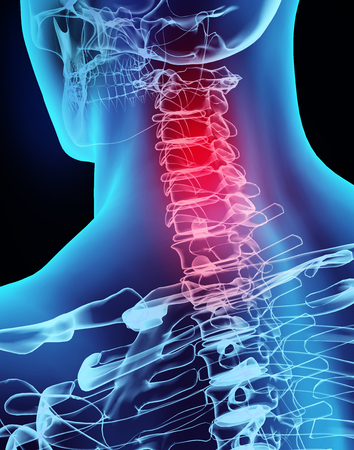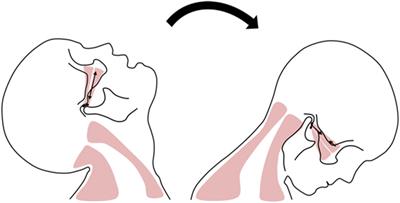Whiplash and Associated Disorders
Whiplash is a term to refer to a range of injuries to the neck and spine caused by sudden acceleration and deceleration or sudden distortion of the neck where the neck is hyper-extended in a rapid manner. Caused by the rapid back-and-forth movement of the head, it is also referred to as neck sprain or neck strain. Whiplash is defined by a set of symptoms that occur following damage to the neck. In whiplash, the intervertebral joints (found between vertebrae), disks, ligaments, cervical muscles, and nerve roots may become damaged.
Considered a non-medical term, the exact injury mechanisms remain unknown. The term “whiplash” is an informal term to describe “Cervical acceleration–deceleration” (CAD), and includes various injuries and symptoms collectively known as “whiplash associated disorders” (WAD).

What Causes Whiplash?
Whiplash usually occurs in an auto accident where the vehicle is hit from behind and the driver’s body is subjected to cervical acceleration-deceleration even in a situation where the bumper was just “tapped” and the vehicle exhibits no damage.
Whiplash is due to a jerking unexpected backward and forward movement of the head, frequently as an outcome of a car accident, a sports injury (including bungee jumping), falls, and headbanging. CAD is one of the main injuries seen by doctors in the aftermath of car accidents.
The Cervical Vertebrae and Phases of Whiplash
A sudden injury to the soft tissues, bones, muscles, and nerves in the neck and spine is observed in whiplash-associated disorders. The seven vertebrae in the neck are known as the cervical vertebrae. The first two of these cervical vertebrae are known as the axis and atlas.
The atlas is the top bone and the axis sits below it. They are shaped differently from the other five. The atlas and axis provide a way for the skull to rotate from side to side. Exaggerated flexion and extension can injure the vertebrae and interfere with movement. This can be observed directly after the car accident or even days, weeks, or years later as the body sets the injury in place.
Whiplash injuries occur in four phases. First: the position before the collision, then retraction, followed by extension and rebound. In the position prior to the accident, there is no force other than the standard force of gravity on the neck. The neck is in a stable position because of inertia.
Neck ligaments injured in whiplash can lead to instability of the structure of the neck. Actual whiplash occurs during the retraction phase. The following extension phase is when the entire head and neck is brought to a stop or limited by the vehicle’s head restraint. The rebound phase sees the neck return to a new state of inertia where it has suffered an injury.
Some claim the majority of injuries happen in the C-5 and C-6 area. However, the Atlas is the crown of the spine and is almost always a significant factor in a car accident regardless of where the vehicle is hit and how hard.
Long-Term Effects if Whiplash is Left Untreated
The lack of abnormality on an X-ray does not mean there is an absence of injury. The truth is, recent studies have found pain-causing spinal injuries that escaped X-rays, CT, and MRI scans.
Most individuals who experience whiplash will recover within a month or two. However, it’s hard to forecast the consequences of going without treatment. Generally, long-term pain may be more likely when the first symptoms include the rapid onset of acute neck pain. Click here for a list of common whiplash symptoms.
If you have just been in a car accident or you had an accident years ago and have questions about whether the symptoms you are having are related, please contact the office.
Car Accident Chiropractor Consultation
We offer a FREE 10-minute consultation for you to discover if our modern, gentle, healing chiropractic techniques can help you reclaim pain-free living. Call 512-892-2160 now or contact us via email here. Find out why a patient of Dr. Stakes dubbed him the Human Pain Eraser.
